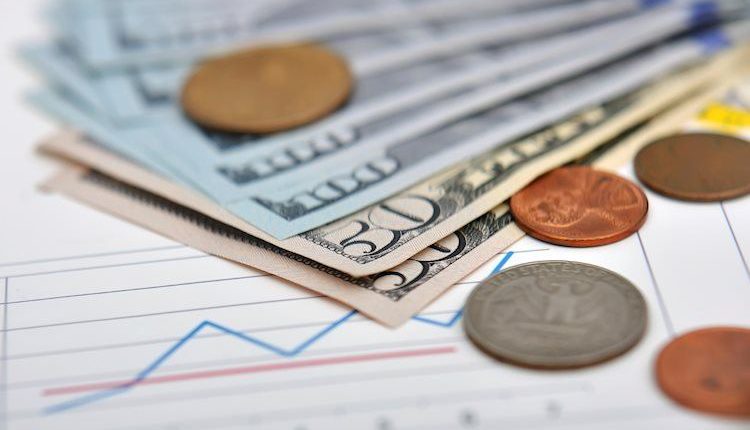- US Dollar rises after UoM positive data.
- Consumer confidence improves, inflation expectations were mixed.
- FOMC cuts rates by 25 bps, economic growth remains solid.
The US Dollar Index (DXY), which measures the value of the USD against a basket of six currencies, rose on Friday. This comes after positive University of Michigan data and the announcement that the Federal Open Market Committee (FOMC) lowered interest rates by 25 basis points on Thursday.
The Fed expressed optimism about economic growth but acknowledged easing labor market conditions. Despite the rate reduction, DXY has rebounded and could continue its upward momentum if the data continues coming in strong.
Daily digest market movers: US Dollar rises on Michigan sentiment data, FOMC decision
- The FOMC concluded its two-day meeting with an expected 25 bps rate cut, signaling continued easing amid concerns over global economic growth.
- Despite weak jobs data, other indicators suggest the US economy remains robust, with solid labor market conditions and growth forecasts above trend.
- The Atlanta Fed’s GDPNow model estimates Q4 GDP growth at 2.4%, while the New York Fed’s Nowcast model tracks it at 2.0%.
- Rising productivity is expected to support low inflationary economic growth, leading to higher real interest rates and currency appreciation in the long term.
- Consumer confidence improved in November with the University of Michigan’s Consumer Sentiment Index rising to 73 from 70.5 in October.
- The Current Conditions Index declined slightly to 64.4, while the Consumer Expectations Index climbed to 78.5.
- Inflation expectations remained low, with the one-year outlook edging down to 2.6% and the five-year outlook rising to 3.1%.
DXY technical outlook: DXY maintains bullish momentum, resistance at 105.50
The DXY index’s indicators retracted slightly on Thursday but maintained positive momentum by the end of the week. The Relative Strength Index (RSI) stands deep in positive territory, while the Moving Average Convergence Divergence (MACD) prints lower red bars.
The DXY has regained support at its 200-day SMA and completed a bullish crossover between the 200-day and 20-day SMAs. This suggests potential for further upward price action despite a recent pullback this week.
Central banks FAQs
Central Banks have a key mandate which is making sure that there is price stability in a country or region. Economies are constantly facing inflation or deflation when prices for certain goods and services are fluctuating. Constant rising prices for the same goods means inflation, constant lowered prices for the same goods means deflation. It is the task of the central bank to keep the demand in line by tweaking its policy rate. For the biggest central banks like the US Federal Reserve (Fed), the European Central Bank (ECB) or the Bank of England (BoE), the mandate is to keep inflation close to 2%.
A central bank has one important tool at its disposal to get inflation higher or lower, and that is by tweaking its benchmark policy rate, commonly known as interest rate. On pre-communicated moments, the central bank will issue a statement with its policy rate and provide additional reasoning on why it is either remaining or changing (cutting or hiking) it. Local banks will adjust their savings and lending rates accordingly, which in turn will make it either harder or easier for people to earn on their savings or for companies to take out loans and make investments in their businesses. When the central bank hikes interest rates substantially, this is called monetary tightening. When it is cutting its benchmark rate, it is called monetary easing.
A central bank is often politically independent. Members of the central bank policy board are passing through a series of panels and hearings before being appointed to a policy board seat. Each member in that board often has a certain conviction on how the central bank should control inflation and the subsequent monetary policy. Members that want a very loose monetary policy, with low rates and cheap lending, to boost the economy substantially while being content to see inflation slightly above 2%, are called ‘doves’. Members that rather want to see higher rates to reward savings and want to keep a lit on inflation at all time are called ‘hawks’ and will not rest until inflation is at or just below 2%.
Normally, there is a chairman or president who leads each meeting, needs to create a consensus between the hawks or doves and has his or her final say when it would come down to a vote split to avoid a 50-50 tie on whether the current policy should be adjusted. The chairman will deliver speeches which often can be followed live, where the current monetary stance and outlook is being communicated. A central bank will try to push forward its monetary policy without triggering violent swings in rates, equities, or its currency. All members of the central bank will channel their stance toward the markets in advance of a policy meeting event. A few days before a policy meeting takes place until the new policy has been communicated, members are forbidden to talk publicly. This is called the blackout period.
Read the full article here

